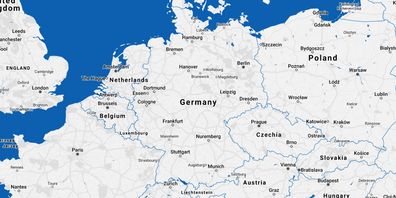
Physics, Department
Naturwissenschaftliche Fakultät II - Chemie, Physik und Mathematik
Martin-Luther-Universität Halle-Wittenberg
Institut für Physik
von-Danckelmann-Platz 3
D-06120 Halle (Saale)
https://www.uni-halle.de
Uni Halle-Wittenberg
Department on the internet

Map material from the free geographic information system OpenStreetMap. The DAAD explicitly does not adopt the information provided there (names, boundaries, etc.) in every case. No guarantee is given for the accuracy of this information.
Legend:
- Department
Basic information
- Total number of students at the department
430
- Number of master degree students (w/o teacher qualification)
120
Support during the study entry phase
- Total score for support in the study entry phase
11/16 points
International orientation
- Share of anglophone research groups
80.0%
Research
Research profile (distribution of PhD theses)
- Optical, Quantum Optical, Atomic, Molecular and Plasma Physics: 22%
- Surface Physics and Nanostructures: 16.9%
- Solid-state and Materials Physics: 33.9%
- Particle Physics: 16.9%
- Astrophysics and Astronomy: 0%
- Soft matter physics, Biological and Chemical Physics, interdisciplinary works: 10.2%
Students' assessments on undergraduate, presence-learning-courses
- Teacher support
- Support in studies
- Courses offered
- Study organisation
- Exam organisation
- Digital teaching elements
- Laboratory internships
- Research orientation
- Introduction to scientific work
- Offers for career orientation
- Support for stays abroad
- Rooms
- Library
- IT-infrastructure
- Overall study situation
- Return rate of the questionnaires
61
Students' assessments on consecutive master's degree courses
- Teacher support
- Support in studies
- Digital teaching elements
- Practical orientation in teaching
- Courses offered
- Study organisation
- Transition to Master's studies
- Research orientation
- Support for stays abroad
- Overall study situation
- Return rate of the questionnaires
22
Further information provided by the department
Special features regarding teaching in the bachelor's degree programme
Special features regarding teaching in the master's programmes
Special features regarding the international orientation
Exchange universities for stay abroads
Special features regarding the equipment
Special features regarding research activities
Other special features
Further information on research activities
Website of the Student Council
online-application
Legend
Groups
green
yellow
red
Acronyms
(S) = Students' judgements
(F) = Facts
(P) = Professors' judgements
Units
Value in percent
Value in points
Euro
Thousand Euro